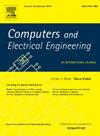物联网入侵检测系统学习技术的前景:系统性文献综述
IF 4
3区 计算机科学
Q1 COMPUTER SCIENCE, HARDWARE & ARCHITECTURE
引用次数: 0
摘要
物联网通过互联网将设备相互连接并进行协作。然而,其广泛的连接性和数据生成带来了网络安全风险。在架构中集成强大的入侵检测系统(IDS)已变得至关重要。IDS 可保护数据、检测攻击并确保网络安全和隐私。最近,利用人工智能方法(通常称为学习技术)构建基于异常的入侵检测系统受到了广泛关注。在此背景下,本研究通过系统的文献综述,全面分析了当前明确采用学习技术的物联网安全研究的现状。这些技术主要分为四类:机器学习、深度学习、迁移学习和联合学习。从 2018 年至 2023 年间发表的 646 篇论文中,我们根据研究关键词选出了 36 篇包含所有这些技术的论文。然后,我们根据各自的学习技术对这些被选中的研究进行了分类,并结合联合学习和迁移学习进行了额外的混合分类。此外,本文还对所研究的文章进行了不同维度的比较分析。研究成果证明了每种学习技术的有效性,阐明了所使用的数据集和衡量标准,最后还讨论了该领域的挑战和未来建议。本文章由计算机程序翻译,如有差异,请以英文原文为准。
Landscape of learning techniques for intrusion detection system in IoT: A systematic literature review
The IoT has interconnected devices that collaborate via the Internet. Yet, its widespread connectivity and data generation pose cybersecurity risks. Integrating robust intrusion detection systems (IDSs) into the architecture has become crucial. IDSs safeguard data, detect attacks, and ensure network security and privacy. Constructing anomaly-based intrusion detection systems using artificial intelligence methods, often termed learning techniques, has gained significant traction lately. In this context, this study undertakes a systematic literature review to comprehensively analyze the current landscape of research concerning IoT security, explicitly employing learning techniques. These techniques fall under four primary categories: machine learning, deep learning, transfer learning, and federated learning. From a pool of 646 papers published between 2018 and 2023, we have selected 36 papers encompassing all these techniques based on the keywords of the study. These chosen studies were then categorized based on their respective learning techniques, with an additional hybrid classification that combines federated learning and transfer learning. Moreover, the paper provides a comparative analysis of the studied articles across different dimensions. The research outcomes demonstrate the effectiveness of each learning technique, shed light on the datasets and metrics employed, and conclude with a discussion on open challenges and future recommendations in this domain
求助全文
通过发布文献求助,成功后即可免费获取论文全文。
去求助
来源期刊

Computers & Electrical Engineering
工程技术-工程:电子与电气
CiteScore
9.20
自引率
7.00%
发文量
661
审稿时长
47 days
期刊介绍:
The impact of computers has nowhere been more revolutionary than in electrical engineering. The design, analysis, and operation of electrical and electronic systems are now dominated by computers, a transformation that has been motivated by the natural ease of interface between computers and electrical systems, and the promise of spectacular improvements in speed and efficiency.
Published since 1973, Computers & Electrical Engineering provides rapid publication of topical research into the integration of computer technology and computational techniques with electrical and electronic systems. The journal publishes papers featuring novel implementations of computers and computational techniques in areas like signal and image processing, high-performance computing, parallel processing, and communications. Special attention will be paid to papers describing innovative architectures, algorithms, and software tools.
 求助内容:
求助内容: 应助结果提醒方式:
应助结果提醒方式:


